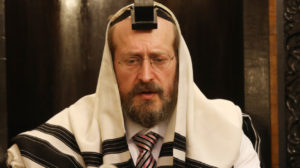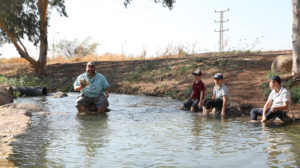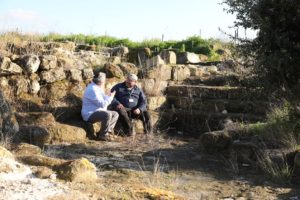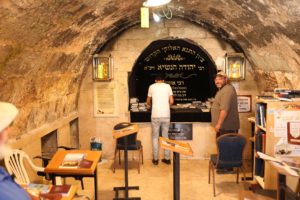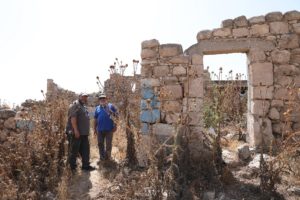Fenced In
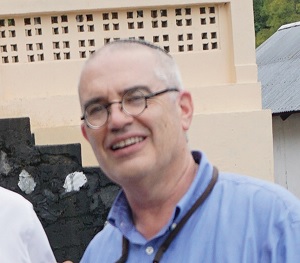
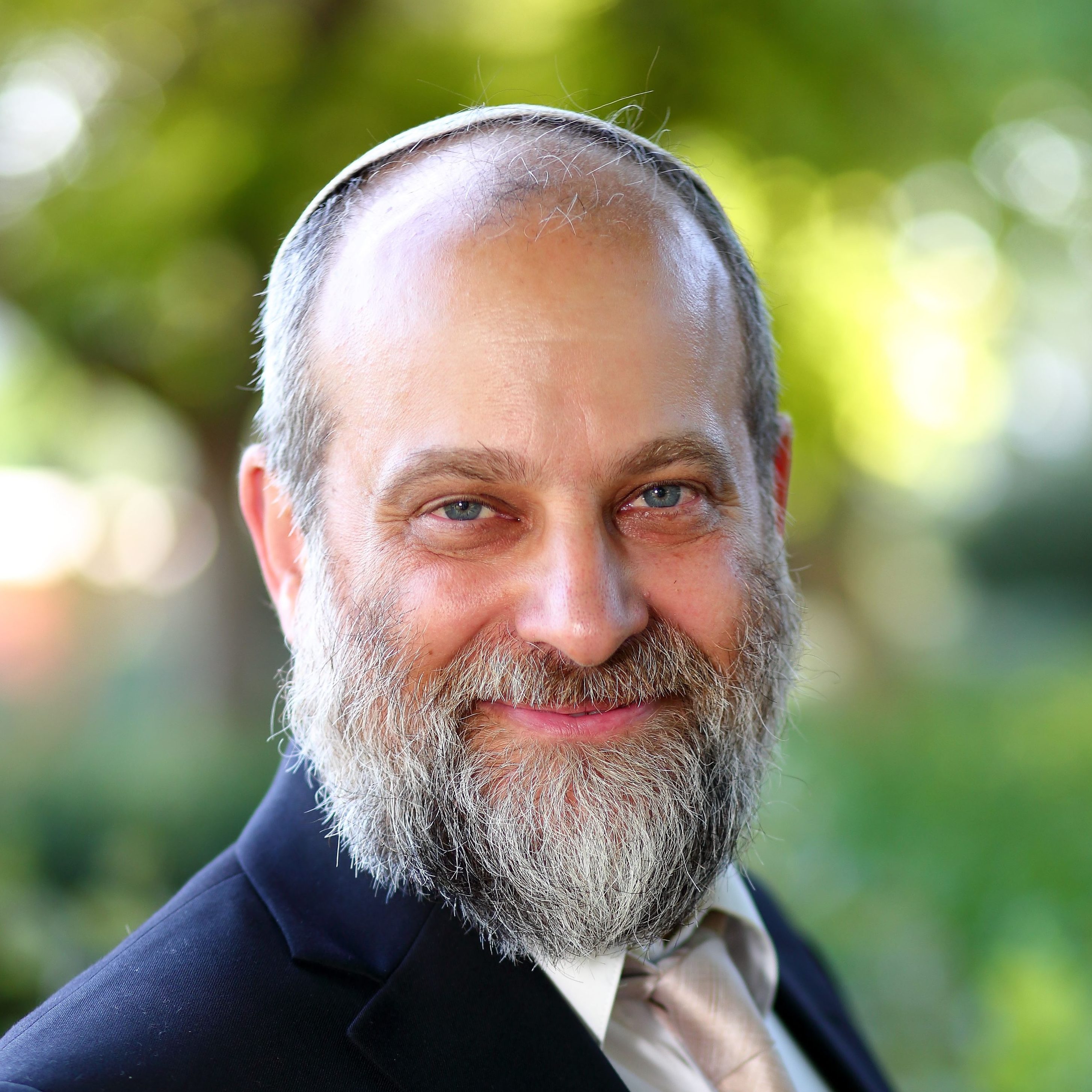
Cyprus's historical Jewish havens of refuge are in closed military zones following a civil war — but that wouldn’t stop us, would it?
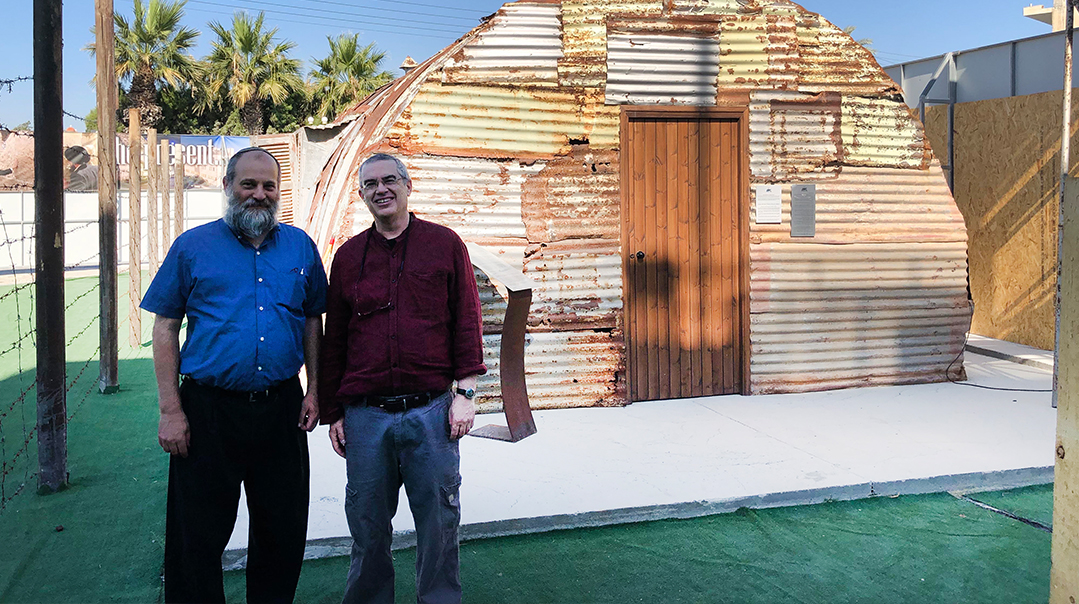
W
ith its kosher restaurants and four Chabad Houses, Cyprus is a popular vacation spot for Israelis, although what interested us more than the pristine beaches were the island’s historical Jewish havens of refuge. Problem was, they’re mostly located in closed military zones following a civil war — but that wouldn’t stop us, would it?
Days of Wine and Locusts
The Cyprus-Jewish connection isn’t just about an island vacation paradise a short 300 miles northwest of Eretz Yisrael, or simply a place for civil marriages outside the chief rabbinate’s purview. Techeiles and argaman, the blue and purple of the Torah, came from “the islands of Elishah” (Yechezkel 27:7), which are sometimes identified as Cyprus, and recent archaeological digs in Cyprus have discovered mounds of the snails from which techeiles is thought to be made. Coins from the Hasmonean period have reportedly been found there, pointing to trade and a Jewish community during the Second Temple period. And the Talmud mentions that “yayin Kafrisin” — wine from Cyprus —was particularly special and important; cloves used to make incense for the Beis Hamikdash were soaked in the wine to improve their fragrance.
In more modern times, our first visit to Cyprus came a few years back, when a swarm of locusts jumped from Africa to Cyprus. At the time, we were studying the kosher locusts mentioned in the Torah and collecting testimonies of old Jews from North Africa and Yemen who had the tradition of eating them. When we learned about this chance to see a plague resembling the one that occurred before Yetzias Mitzrayim, we jumped too.
The Israeli authorities, however, were none too excited about the possibility of such an invasion. There had not been a locust plague in Israel since the 1950s and the results of one now could be catastrophic for the country, a mere 50-minute flight away. But we were anxious to observe a locust swarm firsthand, and per our request, the Cypriot minister of agriculture actually invited us to come evaluate the species. He assumed that big locust experts were coming from Israel, and arranged a car and driver to take us to ground zero of the plague. We were awed by the millions of locusts that darkened the sky. We finally understood the fearsome description of the plague the prophet Yoel writes about: complete desolation of all agriculture in the path of the swarms. Trees were stripped of even their bark, and the animals and people were left without any food.
When the international news outlets heard that the “Israeli experts” were there, they asked us for interviews, especially as we were fluent English speakers. (Weeks later, a dental patient of Ari G. called him excitedly to say he’d seen him on CNN as an “Israeli locust expert” — clearly raising questions about the reliability of any news report in general.)
Disappointed Dreams
In a recent trip to the island, the locust plague safely behind us, we wanted to find out more about the history of the Jewish communities that flourished — and waned — in Cyprus.
The only time in recent history that Cyprus had a large Jewish population was between 1946 and 1949, and those Jews weren’t voluntary residents. World War II had ended, and while many bedraggled survivors hoped to make a new life in Mandatory Palestine, the British, following their infamous White Paper, wouldn’t allow the Jews in. Those who succeeded in entering the country were considered “illegal immigrants” and locked up in a detention center in Atlit, just south of Haifa. As their numbers grew, new arrivals were sent to large detention camps on Cyprus, eventually released and repatriated with the ousting of the British and the establishment of the State of Israel.
Yet before Cyprus became associated with detention camps, it was supposed to have a very different connotation: a refuge for Jews escaping from persecution.
Back in the late 1500s, the widowed Dona Gracia — the wealthiest and most influential Jewish woman in the world at that time — escaped from the Inquisition in Portugal with her nephew, Don Joseph Nasi. They eventually found refuge in the Ottoman Empire, where the sultan welcomed them, along with tens of thousands of Jews fleeing from the Inquisition.
Don Joseph became one of the leading members of the court; his vast trading empire in Europe gave him great sway over Turkish foreign policy. After being appointed Lord of Tiberius, he tried to settle Jews in the Holy Land, but the plan met with many obstacles. In the 1570s he suggested that Sultan Selim II invade Cyprus as a way to curb the power of Venice, which had conquered the island in 1489. This plan called for Don Joseph to become king — according to legend he even bought himself a crown — and one of his secret goals was to turn the island into a refuge for oppressed Jews. But political upheavals led to the waning of his power, and this plan was thwarted.
Still, the few Jews who did arrive in Cyprus formed the basis of a Jewish community that existed on the island for several centuries. During the late 1800s, some Jews escaping persecution in Eastern Europe tried unsuccessfully to establish farming communities on Cyprus, and by the time of the next chapter in Cyprus’s Jewish history — the post-Holocaust detention camps — little remained of those early attempts to turn the island into a Jewish haven.
Caged in Camp
Living conditions for the 53,000 Jews detained on Cyprus were terrible. There were five “summer” camps at Kraolos, near the port of Famagusta, and seven “winter” camps at Dhekelia. The camps were similar, but “summer” meant housing in tents and “winter” meant accommodations in tin huts. There was little privacy — 10 to 14 people lived in a structure — sanitation was poor, and there was a severe shortage of clean water. Each person had only the clothes on their backs, some blankets issued by the British army, a bed, a towel, a cup, and a bowl. The several hundred Jews who died in the camps (including several who were killed by British guards) were buried in the Margoa Jewish cemetery, and all of them were eventually reinterred in Israel.
The overwhelming majority of the Jews detained were Holocaust survivors who had reestablished families, and some 2,200 babies were born on the island. A cousin of Ari G.’s wife was one of those babies, and when we told his mother, who is still alive, that we would be traveling back there, she told us how, due to the unsanitary conditions in the camp, the British allowed women to give birth in a British military hospital. (Today, that hospital is a Greek-Cypriot military hospital located in a no-entry army base. But our contacts made special arrangements and, after verifying our identities, the bored-looking guards escorted us the few meters from the gate to a memorial pictorial display of those times.)
From the outset, the religious detainees set about organizing a Torah-observant community. The Israeli chief rabbinate sent Rav Yehoshua Menachem Mendel Ahronberg, a Holocaust survivor and talmid chacham, to be the rav of the camps. He set up a yeshivah, built a mikveh, and organized a beis din to respond to questions posed by agunos and others. For instance, a question arose concerning the halachah that if a woman loses her kesubah, the couple must obtain a substitute, known as a kesubah deirkisa. But a rav will write this only if he has evidence that the couple is married. Needless to say, the chances of a couple who survived the Holocaust still having their kesubah were slim.
Meanwhile, the Haganah worked tirelessly to spirit people away to Eretz Yisrael, and even set up military training divisions in the camps, using wooden sticks as guns, in preparation for the coming War of Independence. Even after Israel gained its independence in May 1948, the British refused to release the young men as they didn’t want to “alter the balance” of the war. The camps were finally closed on February 10, 1949.
Today, there is almost nothing left in situ of the original camps, except for one tin hut that a farmer used for storing his tractor. The Chabad shaliach in Larnaca, Rabbi Arie Zeev Raskin, acquired the hut and restored it — he’s planning to open a Jewish museum of Cyprus, with this iconic tin hut as the centerpiece.
Rabbi Raskin’s community consists of approximately 600 Jewish families today. The kehillah has a mikveh, Jewish cemetery, shul, and kosher restaurants — a nice infrastructure for the high tourist volume.
Secret Society
We wanted to find out if anyone still remembered the camps, and in our search, we came across a woman named Poly Spyrou, a non-Jewish resident of the small town of Xylotymbou, that was adjacent to some of the camps. A few years ago, Poly became curious about the history of her village and began interviewing the older residents, when one neighbor showed her pictures with Jewish detainees — a part of the town’s history she knew nothing about.
Poly unintentionally opened the floodgates of emotional recollections and exposed a secret society of people who helped Jews escape. The British built and staffed the camps using German POWs captured in North Africa, as well as many locals. The latter were sympathetic to the Jews and their suffering and they helped them in myriad ways. But they never shared those stories — not even with their close relatives. Poly took us to a cave, where she related how her own uncle, then a ten-year-old boy, brought food and water to Jews he found hiding inside. And another one of Poly’s neighbors had helped with an escape through a tunnel. He loaned the Jews a British military shovel and helped them dispose of the dirt. The escapees make it to the coast, where the Haganah took them to Eretz Yisrael.
Grave Desecration
Today, all that remains of the 19th-century settlements is a small cemetery located in a closed military zone controlled by the Turkish army. It’s been visited by Jews just three or four times in the last 20 years.
We wanted to visit it too, so we e-mailed the press office of the Turkish Republic of Northern Cyprus. We needed military permission to visit the area, and finally got the green light after months of correspondence.
Turgut Vehbi of the press and information office met us at the border of the divided city of Nicosia (following the Turkish invasion of Cyprus in 1974, today North Nicosia is the capital of Northern Cyprus, a state recognized only by Turkey), helping to facilitate the passport check and car insurance for the new country we were entering. We then headed to the cemetery, although there were no indications we were entering a closed military zone, but at one point an unmarked police car began to escort us — the officer inside was a high-ranking member of the special forces, and we were also joined by the military commander of the region in his jeep.
We drove through open prairies until we came upon the low stone wall that surrounds the cemetery. The initial perception of a well-kept cemetery was deceptive. Turgut had been there several weeks before in preparation for our visit and, seeing its condition, cleaned it up.
But the actual condition of the cemetery is deplorable. We counted remnants of 90 graves, of which not one appears to be whole. Most of the horizontal marble slabs are either missing or shattered, the headstones broken and illegible — obviously not just a result of natural wear and tear. The policeman asked us if Jews are buried with their valuable possessions. Maybe grave robbers had come looking for them?
Rabbi Raskin told us that he occasionally receives queries from people who think their relatives may be buried in this cemetery. We therefore hoped to photograph and document the names on all the tombs. It was a futile mission. All we could do was say some Tehillim and recite Keil Malei.
Island Comforts
One of the highlights of our trip was meeting Elsie Slonim, a 102-year-old Jewish woman who has been living on Cyprus since 1939. Elsie lives in a mansion, the sole citizen living smack in the middle of the closed military zone dividing the two halves of Nicosia. Her memory is crystal clear, her story fascinating.
She was born in the United States in 1917. After her Romanian father made his fortune in sewing machines, the family returned to Hungary, but the Nazi invasion and subsequent loss of their money was devastating. On a boat back to the States, Elsie met her future husband, David Meir Slonim, who was from a chassidic family in Jerusalem. He was an inventor, on the way to becoming the assistant to the brilliant inventor Guglielmo Marconi, who was developing a radio telegraph system.
When Slonim left Eretz Yisrael, his boat stopped in Cyprus, where he met a fellow Yerushalmi who told him to invest in the island’s citrus orchards. Slonim took his advice, and became fabulously wealthy.
When the Nazis conquered Corfu, all the foreign nationals and Jews on Cyprus were shipped to safety as a precautionary measure. Elsie described sitting on a stinking donkey carrier boat for days until they reached safety in Eretz Yisrael. She and her husband returned to Cyprus after the war and their business flourished. They built a mansion and her husband told her to put anything she wanted in the house. She chose central air-conditioning, something unheard of back then.
Her husband, she told us, was a true baal chesed. He once took an injured man to the hospital and helped him financially for years. After Cyprus’s civil war, the entire zone around her house was made into a military area. All the civilians were kicked out, and their land and houses were confiscated. But when it came to Elsie and her husband’s residence, that injured man’s son, who was a high-ranking officer, felt a debt of gratitude and allowed them to stay.
Still, her life wasn’t easy. After the civil war, the family lost everything. Her husband passed away ten years ago, after 68 years of marriage, and both her children have predeceased her, although she does have a religious grandson in Israel, and a 105-year-old sister who lives in Jerusalem.
It seems fitting that this island, with its ancient Jewish connection, would have a Jewish centenarian in its midst. While speaking with her, we felt like we were touching the past — the world of our great-grandparents. But at the end of our visit we were happy to say goodbye to the past and turn east, toward the future — toward Eretz Yisrael, where not so long ago the neighboring country was but an elusive dream.
(Originally featured in Mishpacha, Issue 778)
Oops! We could not locate your form.

